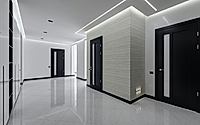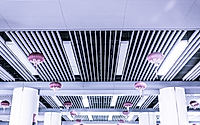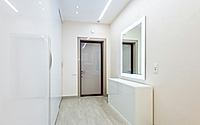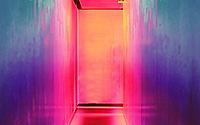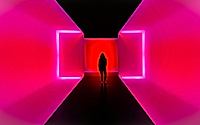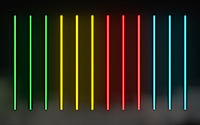How to Convert Fluorescent Tubes to LEDs in Your Home
Many homeowners consider upgrading from fluorescent tubes to LEDs due to the numerous benefits LED lighting offers. If you’re overwhelmed by the variety of LED options and need help finding the right light equivalency, this guide will help you understand how to convert your fluorescent lights into LEDs. The two main methods for this upgrade are retrofitting and replacing.
Retrofitting
Retrofitting involves upgrading your lighting by installing LEDs into the existing fixture. This process can be as simple as replacing old bulbs with new ones. It’s a cost-effective solution since you typically only need to buy new bulbs or tubes, not the entire fixture. Retrofit LED tubes and strips bring benefits such as high energy efficiency, low maintenance costs, and a longer lifespan.
During a retrofit, you might need to bypass the existing ballast or rewire the driver for the new LEDs. Fluorescent tubes use ballasts to initiate a high voltage and regulate the electrical current, but LEDs operate with drivers that are more reliable and longer-lasting. Even if not required, bypassing or removing the ballast is recommended to prevent future failures. Additionally, if you adjust the ballast, ensure you attach any warning labels included with your light to inform future electricians that the lighting has been retrofitted.
Since LEDs are more power-efficient, their wattage will be lower than your current fluorescent lighting. Therefore, focus on the “equivalent wattage,” which indicates how much wattage an LED light needs to produce the same amount of light (lumens) as an incandescent or metal-halide bulb. This helps ensure you get the brightness you need while benefiting from LED efficiency.
LED Tube Lights
LED tube lights are an affordable way to upgrade outdated fluorescent fixtures. To choose the right LED tube light, you need to consider the bulb type, length, and ballast compatibility.
Type A LED Tube: The simplest way to convert a fluorescent fixture to LED is with a Type A LED tube. These are “ballast-compatible LED tubes” that plug directly into existing fixtures. However, they rely on the original ballast, which can fail over time. If you opt for Type A tubes, ensure the ballast is in good condition to avoid future issues.
Type B LED Tube: Also known as direct-wire LED tubes, Type B tubes require bypassing the ballast and rewiring the sockets (tombstones) within the fixture. While it may seem more complex, this method is more efficient due to the common issue of ballast failure. Type B tubes are more energy-efficient as they do not use the ballast. They come in Single-End and Dual-End types.
Type A/B Hybrid LED Tube: These tubes work like a Dual-End Type A and a Single-End Type B. Opting for a Type A/B Hybrid tube is beneficial if you prefer not to bypass your ballast now but might want to in the future.
Replacing Fixtures
Unlike retrofitting, which leaves the existing housing in place, you can replace the entire fluorescent light and housing by choosing a complete LED replacement. There are several reasons why you would choose to replace a fluorescent light fixture with an LED fixture. Given the design of the space you are updating the lighting in, replacement LED troffers and panels may be a smarter choice for converting lights in T-grid drop ceilings. Additionally, removing the existing fluorescent lighting and wiring means that you can remove the ballast altogether to stop any future potential ballast failure.
Switching to LED troffers and panels will also eliminate the need to find compatible tubes and sockets, as you only need to worry about finding a fixture that fits your size and brightness requirements. While replacing fluorescent fixtures with LEDs may have a higher initial cost, this option is expected to bring the best efficiency and performance, as the components and design of the fixture are designed to deliver the best possible lighting output.
LED Troffers
LED troffers seamlessly replace fluorescent troffers and fit perfectly into drop ceilings, enhancing spaces with a modern, clean look. When selecting an LED troffer, consider the size, brightness, wattage, and color temperature to meet your lighting needs. Many troffers come with selectable wattage and color temperature (CCT), allowing you to adjust the brightness and light temperature later if your preferences change.
LED Panels
Another excellent option for replacing fluorescent fixtures in your home is installing LED panels, which offer a sleek, contemporary appearance. There are two main types of flat panel fixtures: edge-lit and back-lit. Edge-lit panels have LEDs around the frame’s perimeter, casting light sideways across the panel to distribute light evenly without hotspots. These panels are often very slim, typically less than half an inch thick, but they are slightly heavier than back-lit panels. On the other hand, back-lit panels have LED chips on the frame’s back, shining through a diffuser to reduce glare and hotspots. While these panels have a deeper housing, they are lightweight and simple to install.
LED panels are suitable for drop or suspended ceilings. Most have a built-in junction box on the frame, making them an ideal low-profile lighting solution. Choose the wattage, CCT, and dimming options based on your needs. Like LED troffers, many LED panels feature selectable wattage and CCT, helping you find the perfect lighting replacement for your home.
- by Matt Watts

